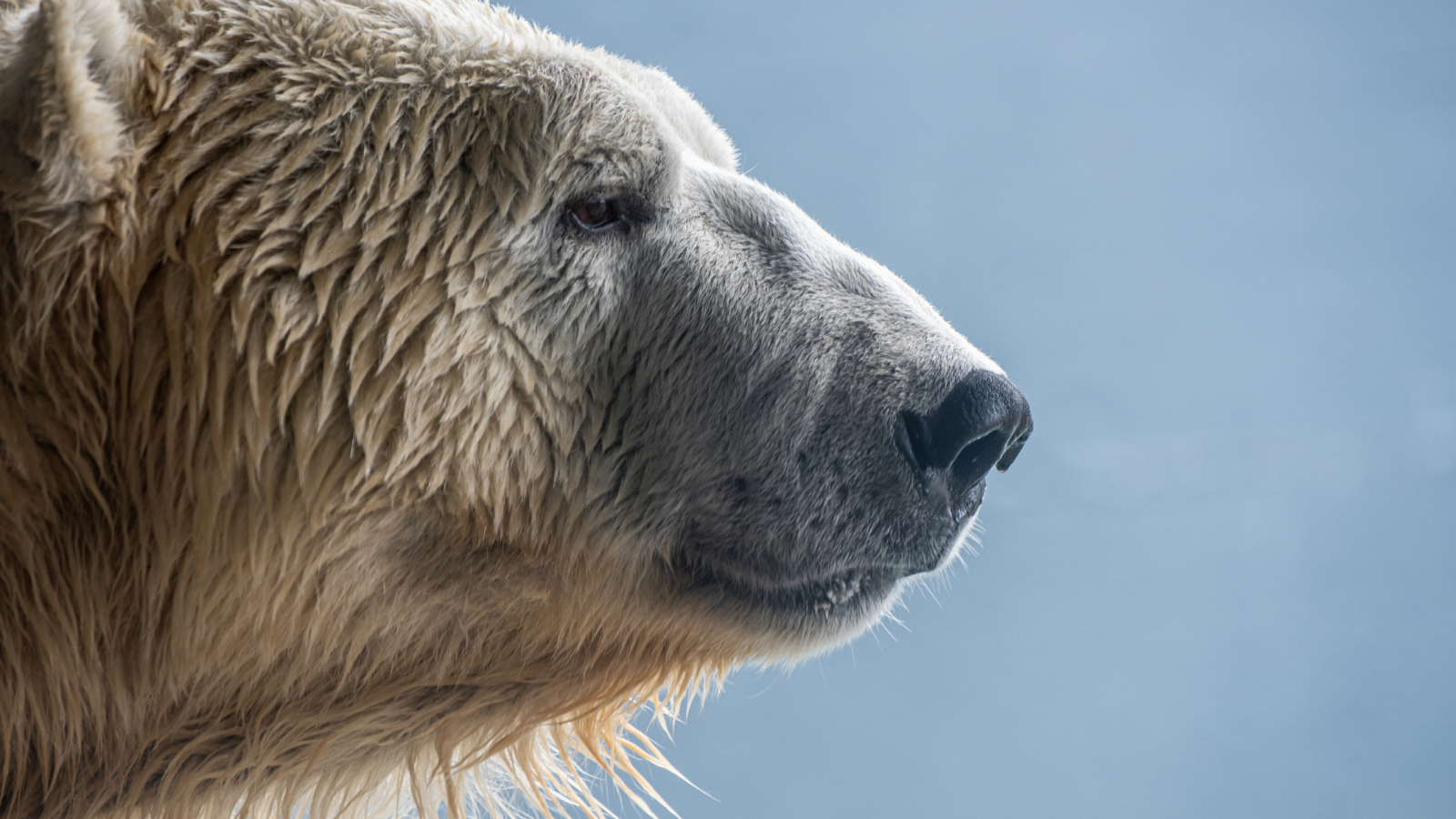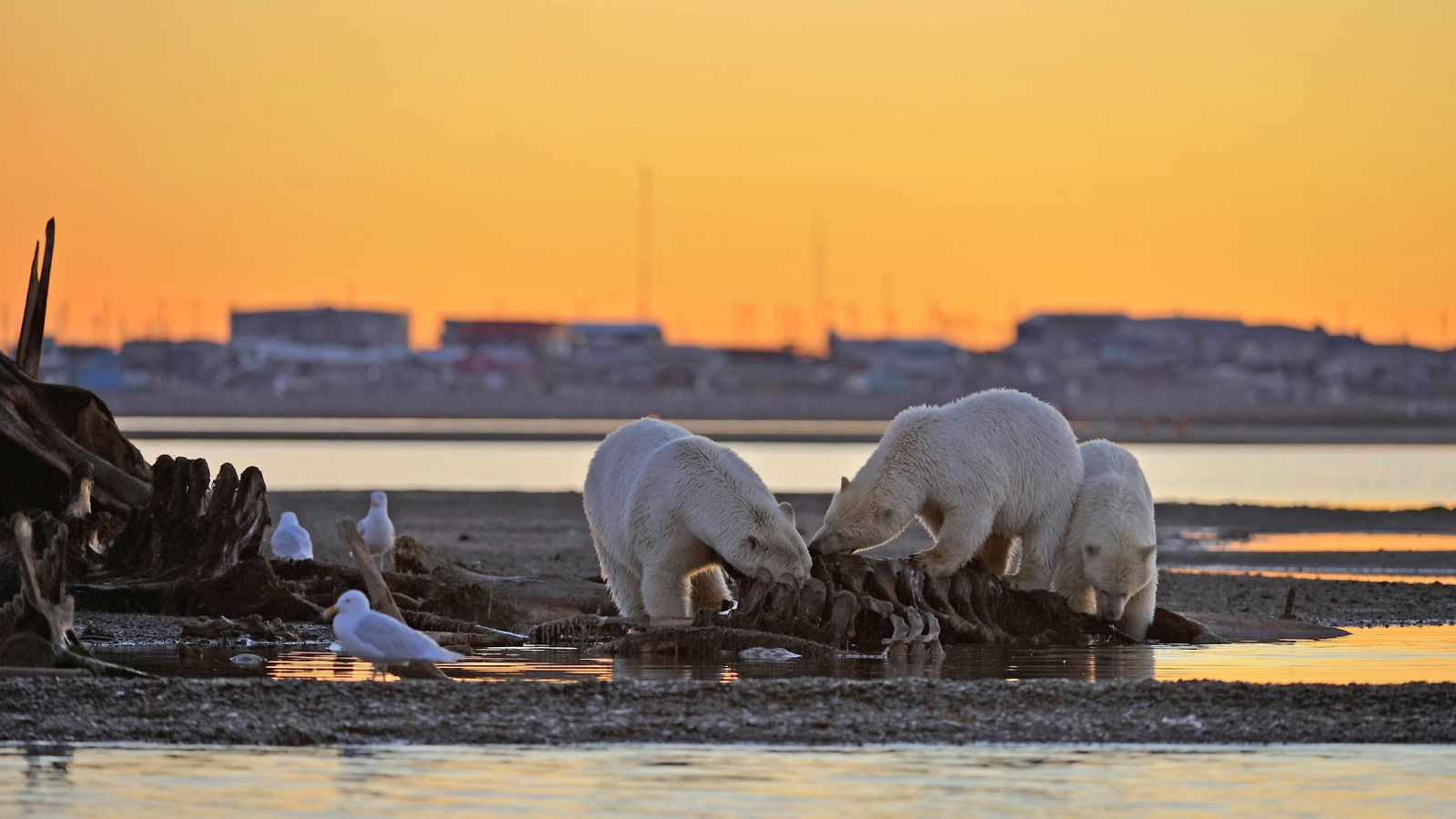
Polar bears could be catching bird flu after feasting on bird carcasses infected with the deadly strain H5N1. The infections could add additional and potentially devastating pressure on an Arctic population already under extreme stress from climate change, experts say.
The first case of a polar bear (Ursus maritimus) dying from highly pathogenic avian influenza (HPAI) was recently recorded in Alaska. Officials with the state's Division of Environmental Health confirmed the death in December after the carcass was found in the northernmost town of Utqiagvik in October. Experts believe the bear contracted the virus from infected birds it was scavenging on.
It is likely other polar bears have been infected with bird flu, Robert Gerlach, Alaska's state veterinarian, told Live Science in an email. But how individuals respond to infection will depend on their overall health.
The case was not unexpected — black bears (Ursus americanus) and brown bears (Ursus arctos) have previously been found with the deadly virus. However, polar bears are a vulnerable species because of the loss of their sea ice habitat, so any additional deaths from disease could serve another blow to the species.
Related: 1st-known 'highly pathogenic' bird flu cases in Antarctic could threaten penguins
H5N1 was first identified in China in 1996, and since then outbreaks have been recorded across the planet. In 2020, a new variant emerged that caused an unprecedented number of deaths among birds. It spread to North America in 2021.
Numerous mammals have also been impacted by the virus, leading to thousands of deaths worldwide.
The wider significance of the polar bear case is unclear. A single death isn't necessarily relevant from a conservation perspective, Douglas A. Clark, associate professor at the University of Saskatchewan's School of Environment and Sustainability, told Live Science in an email.
However, it shows the species is vulnerable. "This is unlikely to be an isolated event — it's just that this one led to an outcome that was detected," he said.

Monitoring for the virus among polar bears is difficult due to the landscape they live in. Experts said the risk of bear-to-bear transmission is low as polar bears are a solitary species, but the big concern for several subpopulations is that reduced sea ice has pushed them to feed more on seabirds, potentially leading to greater virus exposure.
"The challenge is to determine if eating birds is increasing or if it's just that we're getting more reports of polar bears eating birds as there are more people in the Arctic and they're more likely to document such events," Andrew Derocher, a professor in the Department of Biological Sciences at Canada's University of Alberta, told Live Science in an email. "Regardless, avian influenza is present in the Arctic and polar bears are likely to have been and will be exposed. How big a challenge it is [or] will be for the bears is hard to know."
Pollution could also make polar bears more vulnerable to bird flu. The species is highly impacted by anthropogenic chemicals because they accumulate in the animals' high-fat diets. When the bears are forced to shore, their fat stores deplete and the circulating pollutants stored away in the fat start to interfere with their immune systems. "A bear fasting for longer, nutritionally stressed, may have a weakened immune system," Derocher said. "Now expose a bear with a weakened immune system to avian influenza and the issue of surviving the exposure becomes more challenging."
What happens next is unclear. Among polar bears, cases are likely to be limited to those scavenging or killing birds infected with the virus.
Clark said disease hasn't really been a major issue in polar bear conservation so far, but this could change, and bird flu could become a "cumulative stressor" on a population already facing sea ice loss.
"Decreasing the population of animals will mean fewer for breeding and raising the next generation," Gerlach said. "This on top of the stressors for access to habitat, food sources and impact of climate change could have some devastating effects."







